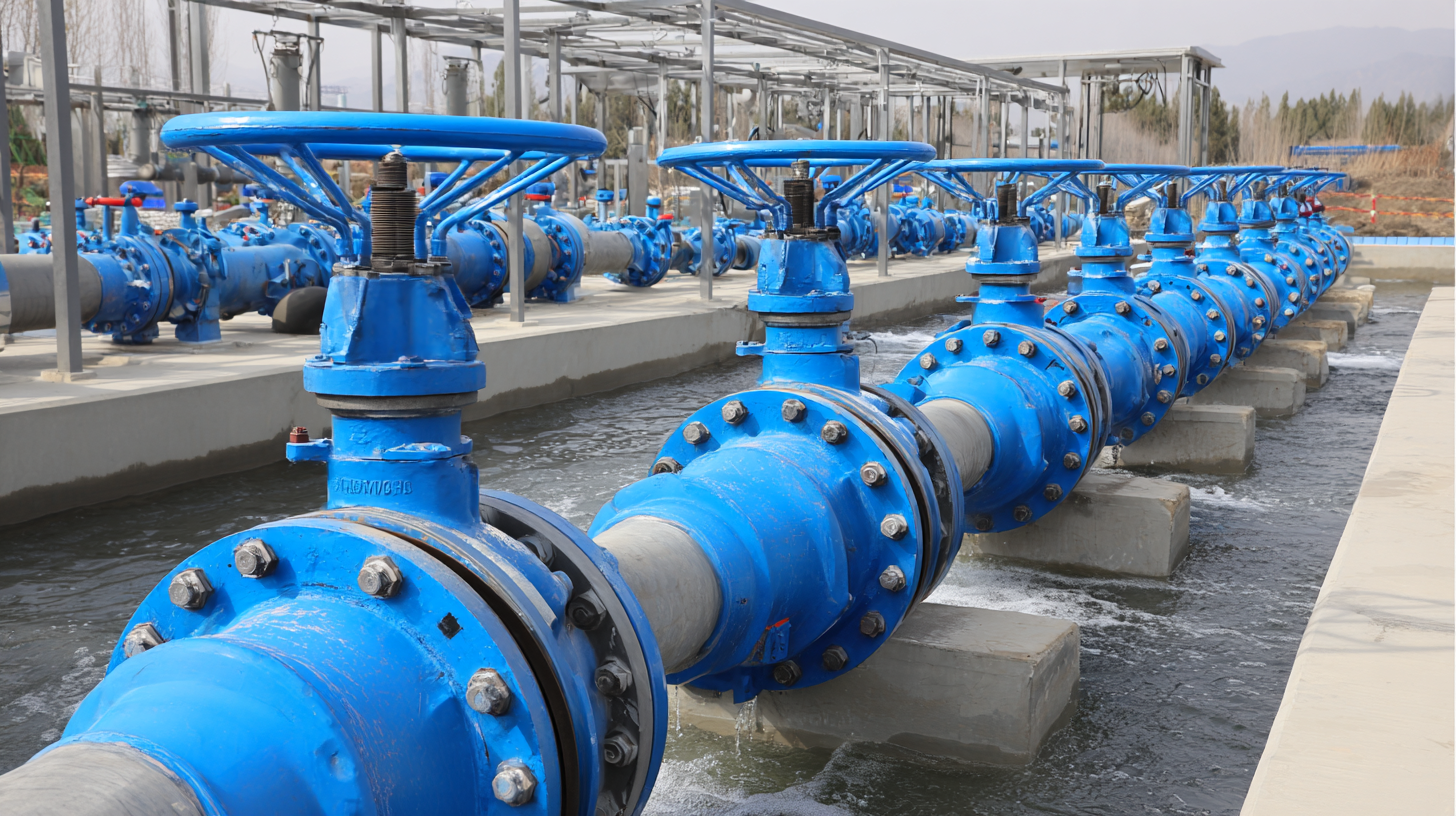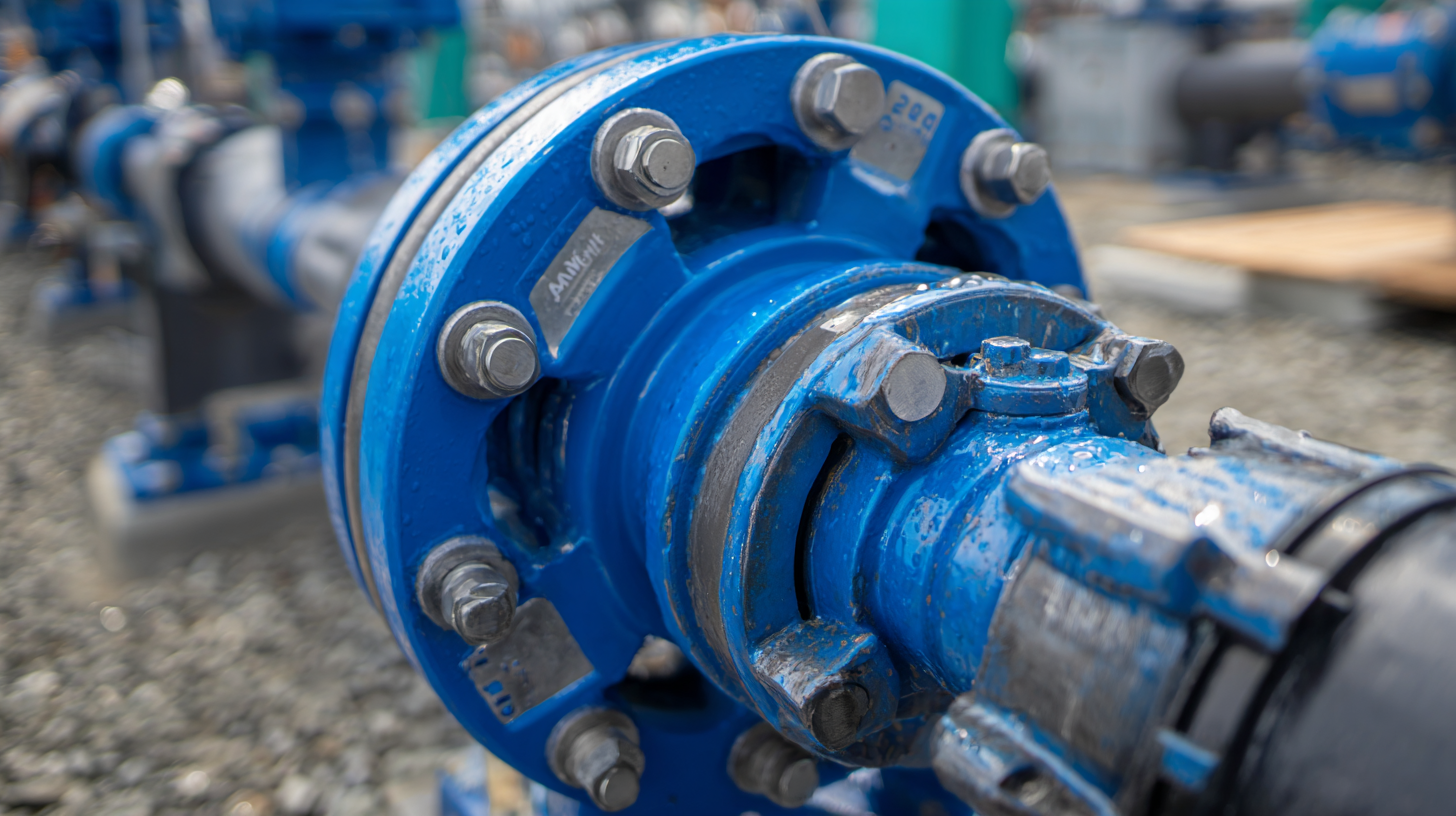Leave Your Message
In today's rapidly evolving water management landscape, efficient infrastructure is paramount for sustainable resource utilization. The Awwa C504 Butterfly Valve stands out as a crucial component in this domain, designed to optimize flow control and enhance the operational efficiency of water systems. With the increasing demand for reliable water distribution, the significance of incorporating the Awwa C504 Butterfly Valve into water management systems cannot be overstated.

This valve not only ensures minimal pressure loss and energy consumption but also provides a compact solution that is easy to install and maintain. As municipalities and industries strive to meet regulatory requirements and environmental standards, the Awwa C504 Butterfly Valve emerges as a best-in-class choice, facilitating smooth operation and longevity in various applications.
In this article, we delve into the pivotal role of the Awwa C504 Butterfly Valve, exploring its features, benefits, and the profound impact it has on efficient water management practices.
 The AWWA C504 Butterfly Valve is a crucial component in water management systems, playing a vital role in regulating and controlling water flow. Understanding its functionality begins with recognizing its unique design, which features a circular disc that pivots within the pipeline. This design allows for quick opening and closing, making the valve highly efficient in applications where rapid flow control is necessary. The ability to operate smoothly under varying pressure conditions enhances its reliability in municipal water systems, ensuring that infrastructure can adapt to fluctuating demands.
The AWWA C504 Butterfly Valve is a crucial component in water management systems, playing a vital role in regulating and controlling water flow. Understanding its functionality begins with recognizing its unique design, which features a circular disc that pivots within the pipeline. This design allows for quick opening and closing, making the valve highly efficient in applications where rapid flow control is necessary. The ability to operate smoothly under varying pressure conditions enhances its reliability in municipal water systems, ensuring that infrastructure can adapt to fluctuating demands.
In addition to its operational efficiency, the AWWA C504 Butterfly Valve is constructed for durability. Made from corrosion-resistant materials, it withstands the harsh conditions often encountered in water distribution systems. This longevity reduces maintenance costs and downtime, which is crucial for maintaining effective water management. Moreover, its compact size contributes to easier installation and a reduction in overall piping costs. As communities face growing challenges in water resource management, the AWWA C504 Butterfly Valve stands out as an essential tool for achieving efficient and sustainable water distribution solutions.
The AWWA C504 butterfly valve is a pivotal component in modern water management systems, providing significant advantages that enhance operational efficiency. One of the key benefits is its excellent flow control capabilities. A 2020 report by the American Water Works Association indicates that employing butterfly valves can reduce energy costs by up to 15% in large-scale water distribution networks due to their ability to maintain stable flow rates under varying pressure conditions.
Moreover, these valves are designed for durability and reliability, with many models featuring resilient seating that can withstand both high pressures and corrosive environments. According to a study published in the Journal of Water Resources Planning and Management, the average lifespan of AWWA C504 butterfly valves exceeds 20 years, which is substantial when considering the lifecycle costs associated with maintenance and replacement. This longevity, combined with lower installation costs compared to other valve types, makes them an economical choice for municipalities aiming to optimize their water systems and enhance sustainability efforts.
| Feature | Description | Benefit |
|---|---|---|
| Lightweight Design | Constructed from durable materials that reduce weight | Easier installation and less structural support required |
| Quick Operation | Full open to close rotation in just 90 degrees | Rapid response to flow control needs |
| Versatile Applications | Suitable for various water management systems | Flexibility in deployment across different settings |
| Minimal Pressure Loss | Efficient flow characteristics | Saves energy and reduces pumping costs |
| Durability | Robust construction allows for long service life | Reduces maintenance and replacement costs |
| Easy Maintenance | Simple design allows for easy access and servicing | Minimizes downtime for routine maintenance |
The AWWA C504 butterfly valve has emerged as a pivotal component in modern water management systems, primarily due to its efficiency and performance. The need for effective water management has never been more critical, especially as municipalities face rising demands for water and the challenges posed by climate change. According to the latest reports, up to 30% of treated water is lost in distribution systems across North America, a staggering figure that underscores the importance of adopting technologies that enhance operational efficiency. The AWWA C504 valve, with its streamlined design and reliable sealing capabilities, minimizes water loss and helps utilities optimize their supply chains.
Moreover, adopting the AWWA C504 butterfly valve reflects a broader commitment to sustainability in water management. The valve's ability to reduce friction losses enhances energy efficiency, which is essential in increasingly energy-conscious environments. Moreover, industry surveys indicate that utilities implementing such refined technologies can see a reduction in operational costs by approximately 20%. This combination of performance and cost-effectiveness makes the AWWA C504 valve not just a tool for water control, but a cornerstone for any strategic overhaul aimed at efficient water management and distribution.
The chart above displays the flow efficiency of the Awwa C504 Butterfly Valve compared to traditional valve types. The data highlights that the Awwa C504 Butterfly Valve achieves a significantly higher efficiency, making it a crucial component for efficient water management systems.
When it comes to the installation of AWWA C504 butterfly valves, proper planning is crucial for optimal performance. Begin by ensuring that the valve is compatible with your piping system, paying close attention to the size and material specifications. The valve should be installed in a horizontal position unless otherwise specified by the manufacturer.
During installation, make certain that the actuator aligns perfectly and that all gaskets are securely in place to prevent leaks. Ensuring adequate support for the valve helps avoid undue stress on the joints and enhances the overall longevity of the system.
Maintenance of AWWA C504 valves is equally important to ensure their efficiency in water management. Regular inspection of the valve's physical condition is essential to identify any signs of wear or damage. Lubrication of the actuator and the valve stem should be performed as recommended by the manufacturer to minimize friction and prevent seizing.
Testing the functionality of the valve periodically, including a complete cycle of opening and closing, will help in early detection of any potential issues. Keeping a detailed maintenance log can aid in tracking the valve's performance and scheduling service before minor issues escalate into major problems.
The Awwa C504 butterfly valve stands out in water management systems due to its superior efficiency compared to other valve types. According to the American Water Works Association (AWWA) standards, butterfly valves offer a compact design and low torque requirements, which enable quick opening and closing. This is particularly advantageous in large-scale water distribution networks, where time and energy savings can significantly reduce operational costs. A recent report from the Global Water Intelligence indicates that adopting Awwa C504 valves can improve flow rates by up to 30% compared to traditional gate or globe valves, which is essential in maintaining system balance and reducing pressure losses.
In a comparative analysis, the Awwa C504 butterfly valve also excels in terms of durability and maintenance. The valve's design minimizes the risk of wear and tear, contributing to a longer service life—up to 25% longer than that of comparable models, as found in a study by the Water Environment Federation (WEF). Furthermore, the ease of maintenance associated with these valves means lower labor costs, aligning with industry trends where operational efficiency is paramount. Valves such as ball or check valves, while effective in certain applications, often require more extensive maintenance, making them less ideal for continuous operation scenarios common in water management systems. Thus, the Awwa C504 butterfly valve emerges as a clear leader for efficient water management.

